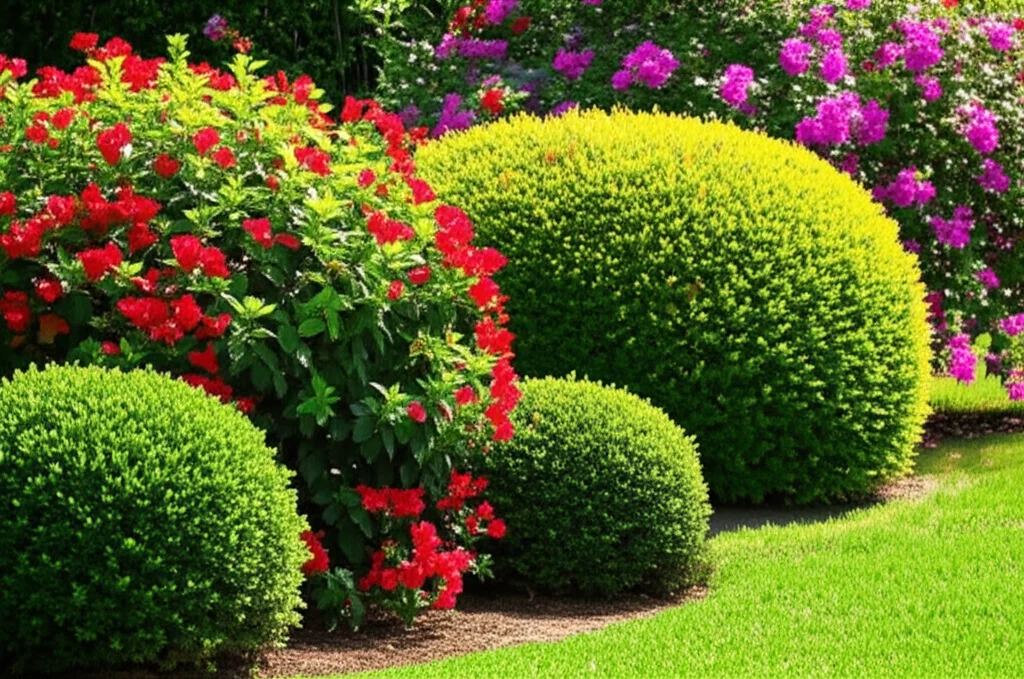Choosing the best bushes to plant in Florida requires careful consideration of the state’s unique climate and diverse growing conditions. This guide explores various flowering, evergreen, and native bushes, providing insights into their care, benefits, and ideal placement in your Florida landscape.
Florida’s vibrant climate offers a haven for lush landscaping. Whether you’re aiming for a burst of color, a privacy screen, or a low-maintenance garden, selecting the right bush is crucial. This guide will navigate you through the best bush options for Florida’s diverse environments, from coastal areas to inland regions.
JUMP TO TOPIC
Flowering Bushes for a Splash of Color
Florida’s sunshine fosters an explosion of color, and these flowering bushes capitalize on it perfectly:
Hibiscus (Hibiscus rosa-sinensis)
A quintessential Florida favorite, the hibiscus boasts flamboyant, trumpet-shaped flowers in a spectrum of colors. These bushes thrive in full sun and well-drained soil. Regular pruning can ensure continuous blooming throughout the year.
- Care: Water regularly, especially during dry periods. Fertilize regularly with a balanced fertilizer.
- Benefits: Attracts pollinators like butterflies and hummingbirds. Adds vibrant color to any landscape.
- Placement: Ideal for borders, hedges, or as a standalone specimen plant.
Bougainvillea (Bougainvillea spp.)
Known for its vibrant bracts (modified leaves that resemble flowers), Bougainvillea adds a tropical touch to any Florida garden. These drought-tolerant bushes thrive in full sun and well-drained soil.
- Care: Prune regularly to maintain shape and encourage blooming. Water deeply but infrequently.
- Benefits: Provides a vibrant display of color. Drought-tolerant. Can be trained to climb trellises or walls.
- Placement: Excellent for fences, walls, or as a cascading groundcover.
Oleander (Nerium oleander)
A classic Florida evergreen shrub, Oleander delivers fragrant, long-lasting blooms throughout the warmer months. Be aware that all parts of the Oleander plant are toxic.
- Care: Tolerates drought and salt spray. Requires minimal pruning.
- Benefits: Low-maintenance, drought-tolerant, and offers long-lasting blooms.
- Placement: Suitable for hedges, screens, or as a backdrop for other plants.
Evergreen Bushes for Year-Round Greenery
Maintain a lush green landscape throughout the year with these evergreen options:
Podocarpus (Podocarpus macrophyllus)
A versatile evergreen shrub, Podocarpus offers dense, dark green foliage. It is tolerant of various soil conditions and is a great choice for privacy screens. This is frequently used as a small tree as well.
- Care: Adaptable to different light conditions, prefers well-drained soil.
- Benefits: Low-maintenance, dense foliage for privacy, adaptable to various conditions.
- Placement: Ideal for hedges, screens, or as a foundation planting.
Florida Holly (Ilex cassine)
A native evergreen, Florida Holly offers attractive dark green foliage and bright red berries. It’s a great choice for attracting wildlife and adding a festive touch to your garden.
- Care: Prefers moist, well-drained soil.
- Benefits: Attracts birds with its berries. Provides year-round greenery.
- Placement: Effective as a hedge, screen, or specimen plant.
Juniper (Juniperus spp.)
Several Juniper varieties thrive in Florida’s climate, offering varying foliage colors and growth habits. Junipers are known for their drought tolerance and low-maintenance nature.
- Care: Requires minimal pruning and watering.
- Benefits: Drought-tolerant, low-maintenance, and offers diverse foliage textures and colors.
- Placement: Groundcover, foundation planting, or accent shrub.
Native Florida Bushes for Eco-Friendly Landscaping
Embrace Florida’s natural beauty by incorporating native bushes into your landscape:
Firebush (Hamelia patens)
A vibrant native shrub, Firebush attracts hummingbirds and butterflies with its fiery orange-red tubular flowers. It also provides food for migrating birds in the fall and winter.
- Care: Prefers full sun to partial shade. Tolerates drought.
- Benefits: Attracts pollinators, provides food for birds.
- Placement: Excellent for butterfly gardens, mixed shrub borders, or as a specimen plant.
Saw Palmetto (Serenoa repens)
A quintessential Florida native, Saw Palmetto offers a unique, textured appearance and is incredibly drought-tolerant.
- Care: Low-maintenance, drought-tolerant.
- Benefits: Erosion control, wildlife habitat.
- Placement: Groundcover, mass plantings, or as an understory plant.
Beautyberry (Callicarpa americana)
Known for its striking clusters of purple berries, Beautyberry adds visual interest to the fall and winter landscape, attracting birds and other wildlife.
- Care: Prefers partial shade.
- Benefits: Provides food for birds, adds vibrant fall color.
- Placement: Woodland gardens, borders, or as an understory plant. Plant in mass for greatest impact.
FAQs: Best Bushes for Florida
Q: What are the lowest maintenance bushes for Florida?
A: Some of the lowest maintenance options include Bougainvillea, Podocarpus, Juniper, and Saw Palmetto.
Q: What are the best flowering bushes for attracting pollinators in Florida?
A: Hibiscus, Firebush, and Butterfly Bush are excellent choices for attracting pollinators like butterflies and hummingbirds.
Q: Which bushes can tolerate Florida’s salty air and soil?
A: Oleander, Seagrape, and Buttonwood are good choices for coastal areas with salty conditions.
Q: What are the best bushes for privacy screens in Florida?
A: Podocarpus, Florida Holly, and Wax Myrtle are effective for creating privacy screens.
Conclusion: Creating Your Ideal Florida Landscape
Choosing the best bushes for your Florida landscape involves considering your aesthetic preferences, maintenance needs, and the specific environmental conditions of your area. From vibrant flowering shrubs to robust evergreens and eco-friendly natives, there’s a perfect bush for every Florida garden. By carefully selecting and caring for your bushes, you can create a thriving and beautiful outdoor space that enhances the natural beauty of the Sunshine State. Be sure to check out our blog for more information on Florida gardening. (Internal link to relevant blog post – automate where possible)
For additional resources on Florida-friendly landscaping, visit the Florida Native Plant Society website. (External link: https://www.fnps.org/)

